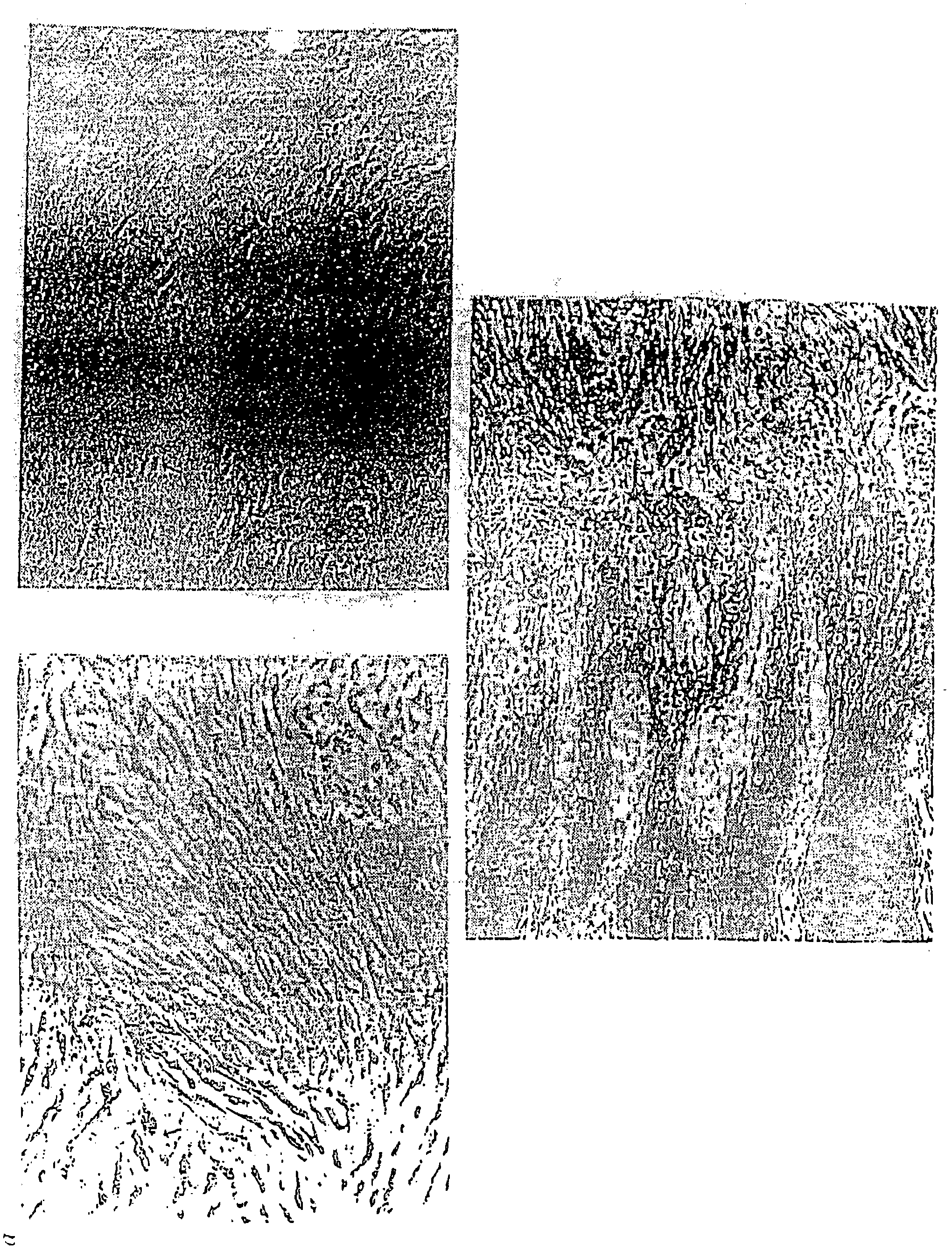In vivo gene transfer for wound healing
A wound and gene activation technology, applied in the direction of fusion polypeptide, virus/phage, antibody mimic/scaffold, etc., can solve problems such as adverse side effects, low efficiency, and reduced efficiency
- Summary
- Abstract
- Description
- Claims
- Application Information
AI Technical Summary
Problems solved by technology
Method used
Image
Examples
Embodiment Construction
[0045] The present invention relates to in vivo methods for the presentation and transfer of DNA into mammalian repair cells for the expression of therapeutic agents. The methods of the present invention involve implanting or placing a gene-activating matrix into a fresh wound site.
[0046] Wound healing is usually a coordinated sequence of events, including (a) tissue destruction and loss of normal tissue architecture; (b) cellular necrosis and hemorrhage; hemostasis (clot formation); (c) lobulated nuclear inflammatory cells and mononuclear Infiltration of inflammatory cells with concomitant vascular congestion and tissue edema; (d) monocytes (macrophages) lyse the blood clot and damage cells and tissues (e) formation of granulation tissue (fibrogenesis and angiogenesis). This sequence of cellular events has been observed in wounds of all tissues and organs arising in a large number of mammalian species (Gailet et al., 1994, Curr. Opin. Cell. Biol. 6:717-725). Thus, the cel...
PUM
 Login to View More
Login to View More Abstract
Description
Claims
Application Information
 Login to View More
Login to View More - Generate Ideas
- Intellectual Property
- Life Sciences
- Materials
- Tech Scout
- Unparalleled Data Quality
- Higher Quality Content
- 60% Fewer Hallucinations
Browse by: Latest US Patents, China's latest patents, Technical Efficacy Thesaurus, Application Domain, Technology Topic, Popular Technical Reports.
© 2025 PatSnap. All rights reserved.Legal|Privacy policy|Modern Slavery Act Transparency Statement|Sitemap|About US| Contact US: help@patsnap.com



